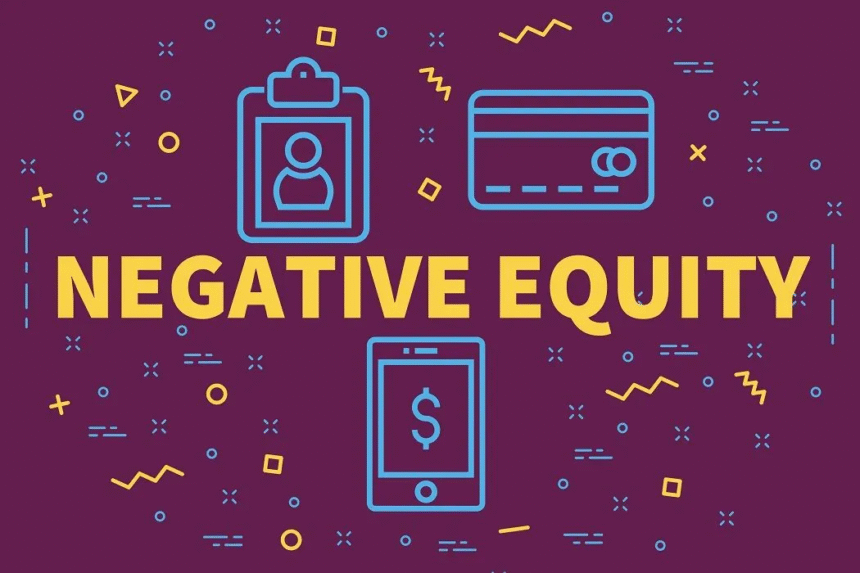When it comes to financing a car, most people focus on monthly payments and interest rates, forgetting one critical factor: equity. If you owe more on your car loan than your vehicle is worth, you are facing what’s often called a negative equity auto loan or being “upside down” on your loan. This situation is much more common than you might think, and it can have lasting financial consequences if not handled carefully—especially if you’re planning to trade in your current car for a new one.
An auto loan calculator with negative equity can be a lifesaver in this scenario, helping you understand exactly how much you owe, how much your car is worth, and whether you can make a smart financial move. Let’s explore why such a tool is essential, how negative equity impacts your buying decisions, and how auto equity loans could help you gain control of your finances.
Understanding Auto Equity: The Basics
Before diving into calculators and financing options, it’s important to understand the concept of auto equity. Equity represents the difference between the current market value of your vehicle and the amount you still owe on your auto loan.
-
Positive Equity: If your car is worth $18,000 but you only owe $10,000, you have $8,000 in positive equity. This equity can either be used as a down payment on your next car or kept as extra value if you sell privately.
-
Negative Equity (Upside Down Loan): If your vehicle’s value is $12,000 but you still owe $16,000, you’re upside down by $4,000. This creates complications when trading in or refinancing your vehicle.
This is precisely why using an auto loan calculator with negative equity is so important—it clearly shows you where you stand and what your true financial obligations are.
Why Negative Equity Happens So Often
Many car owners find themselves in a negative equity auto loan without even realizing it. Here are a few reasons:
-
High Depreciation Rates – Cars lose 15–20% of their value in the first year alone. If you finance most of your purchase with a low down payment, depreciation can drag you into negative equity almost immediately.
-
Long Loan Terms – Auto loans stretching 72–84 months often create a situation where loan payments do not keep up with depreciation.
-
Low or No Down Payment – Rolling into a loan with little money down means your principal debt doesn’t shrink quickly.
-
Add-ons Rolled into Financing – Gap protection, extended warranties, or rolling an old loan balance into a new loan can push you further into debt.
Why an Auto Loan Calculator With Negative Equity is Essential
Here’s why calculating your equity before trading in matters so much:
-
Prevents Financial Surprises
Imagine walking into a dealership thinking your car is worth enough for a new down payment, only to discover you still owe thousands on top of the trade-in. A calculator reveals this before you step foot on the lot. -
Helps Plan Refinancing or Equity Loans
If you do discover negative equity, using the calculator allows you to plan alternatives—such as exploring auto equity loans or refinancing to reduce your monthly burden. -
Guides Smarter Trade-In Decisions
You can decide whether to roll negative equity into a new loan (not recommended), wait until your current car balance reduces, or sell privately for better value. -
Avoids Piling Debt on Debt
By using a negative equity calculator, you can avoid being trapped in a cycle where every new loan starts at a disadvantage.
Auto Equity Loans: A Useful Alternative
If you own another vehicle with positive equity, an auto equity loan (sometimes called a title loan) might be an option worth exploring. With this form of financing, lenders let you borrow cash against the equity in your car.
-
Benefits of Auto Equity Loans
-
Quick access to funds
-
Flexibility in paying off remaining negative equity
-
Lower interest rates compared to unsecured loans
-
-
Searching for Auto Equity Loan Near Me
Many borrowers search for “auto equity loan near me” when they’re looking for local lenders who can provide quick approval. However, not all lenders are equal—always check reputation, licensing, and terms before proceeding. A well-structured equity loan can offer temporary relief, but misuse can deepen financial struggles.
Negative Equity Auto Loan: Your Options
If you find yourself with a negative equity auto loan, here are a few realistic pathways forward:
-
Keep Driving Your Current Car
Instead of trading in immediately, consider keeping your vehicle longer and paying down more of the principal. Over time, you’ll reach positive equity. -
Make Extra Payments
Applying tax refunds, bonuses, or extra monthly payments can close the equity gap faster. -
Consider Refinancing
Some lenders offer refinancing even for negative equity situations, especially if you improve your credit score or secure a cosigner. -
Sell Privately
Private sales often yield higher value than dealer trade-ins. This can shrink or eliminate the negative equity you carry.
Using an Auto Loan Calculator With Negative Equity: Step by Step
Most online calculators are simple to use. Here’s how you should approach it:
-
Input Your Current Loan Balance – The remaining amount you owe on your car loan.
-
Enter Market Value of the Car – Use trusted sources like Kelley Blue Book, Edmunds, or NADA Guides to get an accurate estimate.
-
Calculate the Difference – The tool will show whether you have positive or negative equity.
-
Test Future Scenarios – You can project how different payments (extra installments, lump sum payments, or trade-in offers) will affect your equity position over time.
Trusted Resource for Car Value Estimation
Before using an equity calculator, one of the most reliable sources to determine your car’s value is Kelley Blue Book (KBB). By entering your car’s details—make, model, mileage, and condition—you’ll get an accurate trade-in or private party value. This ensures your calculator results are based on realistic numbers.
(Reference: Kelley Blue Book)
Read More: The Dangers of Negative Equity Auto Loan for New Buyers
Final Thoughts
Being upside down on a car loan isn’t the end of the world, but it’s a situation that requires careful planning. The combination of rising vehicle prices, long loan terms, and fast depreciation makes negative equity auto loans increasingly common.
Before walking into a dealership to trade in your car, do yourself a favor and run the numbers with an auto loan calculator with negative equity. The insights you gain could save you from years of financial strain.
And if the calculator shows you’re deeper underwater than expected? Take it as valuable knowledge. Options such as keeping your car longer, making extra payments, refinancing, exploring auto equity loans, or selling privately can help you work toward positive equity.
The key takeaway is this: information is power in auto finance. Using the right tools and knowing your options ensures you make the smartest move, not the costliest mistake.









